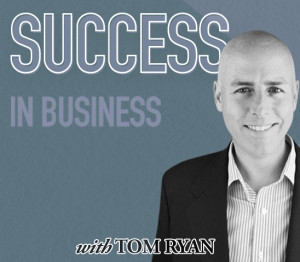 Any time I begin the process of taking apart a big topic, I like to start at the macro level, giving us that all-important 50,000 foot view. The further we zoom out, the easier it becomes to forget about all the smaller, occasionally distracting details. With a little distance, we can start to take in the big picture. Given just how big and complex a great business pitch can be, we need to step as far back as we can until we see just few major concepts.
Any time I begin the process of taking apart a big topic, I like to start at the macro level, giving us that all-important 50,000 foot view. The further we zoom out, the easier it becomes to forget about all the smaller, occasionally distracting details. With a little distance, we can start to take in the big picture. Given just how big and complex a great business pitch can be, we need to step as far back as we can until we see just few major concepts.
There are two major elements that go into creating a business pitch, and you need to nail both of them if you want to see great results from your presentation. These are the “hook” and the “proof.” Each of these is made up of smaller ideas, steps and processes, but for now let’s just think of a pitch in terms of these two big, distinct concepts. You need both for a successful pitch, and they are equally important.
In this post, I’ll be focusing on the “hook.” As a concept, the hook’s job is to do exactly what it sounds like. It’s the part of the pitch that grabs the audience’s attention, allowing you to reel them in.
If you’ve ever gone fishing, you know that hooking the fish is only half of the job. Once you’ve got the fish to take the bait, you still have to get them into the boat. This means reeling them in, carefully, so that they don’t get away. Until you have the fish in the boat, you haven’t caught anything. That act of carefully reeling them in is exactly what happens during the “proof” part of the pitch. Just like in fishing, the hook has to come first, and it has to be successful before you can even consider reeling in your prize.
In my experience, the hook is hardest part to master. It’s a challenge for most people to craft an attention-grabbing hook, especially new entrepreneurs who haven’t yet gone through the process of learning to tell their startup’s story. There’s a flow to creating a compelling narrative, and it takes a little practice to really understand how it works.
The elements of a great hook are actually pretty simple. Every hook starts with a statement of either a problem or an opportunity. Something is either wrong with what’s out there on the market today, or there’s something desperately missing from what’s currently available. This “problem statement” sets up everything that follows it, and it needs to make a strong case, right from the start.
From there, the pitch moves into the “solution.” This is where you tell your audience how your product or service will remedy the problem you’ve just established. Your solution isn’t just an idea, or one possible remedy, it’s something bigger. It’s the big solution to the problem.
The next step is establishing the value of your solution. This allows you to explain how your customers lives will be made better thanks to your solution. While the specifics of the value will depend on the problem and your solution, there are really only four kinds of value drivers you can provide: time, money, risk, and quality.
Can you give people more time? Can you give them more money? Can you reduce their risk? Can you improve the quality of something they need or use? For the pitch to resonate, the answer to at least one of those questions needs to be “Yes.”
Now that you’ve established the value, it’s time to explain your “unfair advantage.” Why is your solution better than any other solution out there? This is your secret sauce, the ace hidden up your sleeve, or the inside knowledge that no one else has.
The final element of the hook is your “traction,” or what you’ve accomplished thus far. The best type of traction are the sales you’ve already made. Paying customers means that there’s proof the market agrees with the value proposition you’ve established. Not only do those customers have the “problem” that you established at the start of the hook, but they’re voting with their dollars that your solution is the right one. There are other types of traction, but nothing beats sales.
The hook does more than just establish a premise for your business to function within. It sets up a story, and it teases the audience with just enough tantalizing details that they will want to learn more. By the end of the hook, they should be hungry to know how you actually plan to solve this puzzle you’ve laid out for them. That solution is the proof, and I’ll talk about how it works in my next post.
